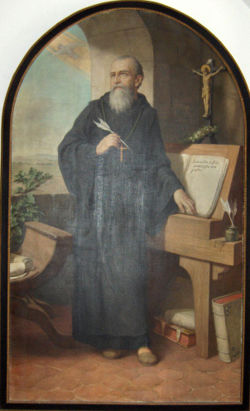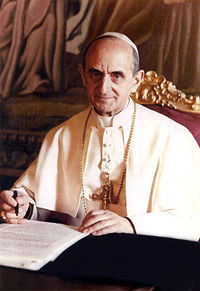
The themefication of services can be pernicious.
The danger with having a tight theme for a service is that everything can get twisted into making it fit into the theme. Readings are chosen, concordance-like, to illustrate the theme (whether the actual text or its wider context fits the “theme” with integrity or not!). Or if readings are provided, they are not read with an open mind and heart; they are used to fit in with the theme…
The themification of services can be subtly harmful. And it is (at least in NZ Anglicanism) very widespread.
The themefication of services leads to reducing access to the scriptures – in more ways than one. It can lead to not reading what the Bible actually says, but trying to find within the Bible our predetermined message for which the Bible simply becomes a source-book to reinforce what we’ve decided is our theme.
In NZ Anglicanism, lectionary revision began in the 1960s with a list of Sunday themes. Readings were then found (concordance-like) to fit with these chosen themes. Soon, a second set (a “Year 2”) of readings was similarly produced – some readings were used more than once; some important readings, because of this methodology, were never used. [Remember, this was at the same time when the Vatican was producing a three-year lectionary with a significantly different methodology – an approach that would, ecumenically and internationally, win the day].
A New Zealand Prayer Book He Karakia Mihinare o Aotearoa (NZPB/HKMA) includes this list of themes on pages 522-524 (in the General-Synod-approved editions of 1989-2005). Until 2004, the theme of the Sunday was included in the NZ Anglican Lectionary Booklet. So, for about four decades the “theme of the day”, the “theme of this service”, was front and centre – and still in the NZPB/HKMA that the majority of clergy have on their shelves, people have in their homes, often in their pews, or in piles or on shelves at the back of their church buildings.
BUT THE THREE YEAR LECTIONARY APPROACH OFTEN HAS NO THEME!
Sure, in the great seasons of Advent, Christmas, Lent, and Easter, the three readings and psalm may be closely connected, but in “Ordinary Time”, the second reading reads semi-continuously through a text, just as the Gospel, quite independently, reads semi-continually through its text Sunday by Sunday. [Yes: the preacher can – even helpfully – highlight a single sermon point “theme-like”. In Ordinary Time, the first reading, in one option in the Revised Common Lectionary(RCL), relates to the Gospel- but even in that RCL system, there’s the option to read through the First Testament semi-continuously, unlinked from the other readings.]
One of the first things that has happened in a themefication Church is the dropping of reading(s) that don’t “fit the theme”! And, as a consequence, studies are showing a low and decreasing level of biblical literacy. People might say they love the Bible, but for many it’s not the REAL Bible, with its multiple voice, conflicting and contradicting passages, its challenging texts and complexities. The Bible they say they love is more like a children’s picture-book version.
The constraining of a service to a single theme impacts every aspect. The collect, as just an example: many people expect the collect to “introduce and reflect” the theme. This simply reinforces the misunderstanding! That (a) is not the role of the collect, and (b) outside of the four seasons I mentioned THERE IS NO THEME. In “Ordinary Time”, the Church of England highlights the disconnection between the collect and the readings: the appointing of the particular collect is independently arrived at using quite a different method from the choice of the readings that we are all essentially following.
One year of collects is sufficient: collects that may have a connection to Sundays in a season, and, in “Ordinary Time”, collects of a general nature that conclude gathering the community and pray for a quite general point, adding another thread to the weaving of the service.
Penultimately – it can get worse! People use the “themes” in NZPBHKMA, announcing it as the “theme” of the service. So last Sunday, such people give the “theme” from page 522 of NZPBHKMA as “The final revelation”, with this coming Sunday presenting the “theme” as “Creation” (or possibly, if they still have a concept of Sexagesima, as “Human frailty”). After Pentecost I have come across two ways of continuing to use the NZPB/HKMA themes. One version continues to count Sundays after Pentecost; so, for example Pentecost 12, they announce the theme as “Ministry”. The other version confuses and conflates “Ordinary Sundays” with the Pentecost counting, so that “Ministry” (the “theme for Pentecost 12) is announced on Ordinary 12. What I have found in this second approach is that after “Ordinary 27” (for which they use the “theme” – and collects etc of Pentecost 27) they run out of Sundays, even emailing me for help.
It. Is. Not. Their. Fault. There has been and is sparse liturgical study, training, and formation. Resources are confused and confusing. Senior clergy belong to the generation that was steeped in the four decades of themed Sundays – these are the generations that train and form current clergy who try their best, passing on and trying to make sense of what they receive…
Finally, a couple of quotes. The first from my (FREE online) book Celebrating Eucharist:
Themes
The Eucharist is a thanksgiving for creation and redemption. That is the primary theme and anything “more” is icing on the cake. Human celebrations are normally of events rather than abstract concepts. Similarly, the scriptures tell the story of a God who acts (action again) and through our remembering and thanksgiving we are renewed to act in response. A theme may be one attempt to summarise briefly a message in the readings within the context of this present gathering. Preoccupation with finding a theme for each service, however, may limit the impact of a service. Community worship is like a lake upon which liturgy can cast a number of stones, each sending out its pattern of ripples. One person (a new Christian) may connect with the opening hymn, another (a person who has worshipped since her youth) with the Collect, another (just unemployed) with the first reading, another (coming to church for the first time since her husband died) with the Psalm, and so on.
Often the feast or liturgical season provides “theme” enough. Advent prepares for Christ’s coming. Christmas celebrates Christ’s birth. Like a particular type of restaurant (Mexican, Chinese, Indian,…), such a “theme” provides the mood in which the meal is enjoyed rather than a straightjacket for the service.
The second quote is from my new Book of Prayers in Common (Feb 2025)
Misguided search for themes in Ordinary Time
The three readings and the psalm set down in the Revised Common Lectionary, and
the Roman Catholic three-year cycle on which it is based, do not start from themes!
The readings on Sundays in the seasons (Advent, Christmas, Lent, Easter) may tie
together and, hence, a collect, when there is a clear focus, can link to that focus.
But the search for a collect to link to a “theme” for every Sunday in Ordinary Time
across the three years is a disastrous error.
At the very least the second reading is following its own course alongside and
independent of the course of the Gospel reading. Often, all three readings are
independent. [To emphasise this insight, the Church of England, in Common Worship, has removed the link between the collect and readings completely for about half the year]. What is required is not a detailed prayer which forms and introduces a straight-jacket theme into which the understanding of readings must then be squeezed.The inherited collect tradition provides a collection of general prayers that each
person, whatever their situation, can make her or his own, and to which we can all say
“Amen” to together. There is, hence, also no need or even point in having three
different years of collects. A year’s worth provides sufficient variety, but not so many
that they do not easily become memorable.
Do follow:
The Liturgy Facebook Page
The Liturgy Twitter Profile
The Liturgy Instagram
and/or sign up to a not-too-often email



Amen, amen!
There is nothing I find more disturbing than to hear someone announce, “The theme of today’s liturgy is …”, when surely the only “theme” to be found in any liturgical celebration will be found in the Paschal Mystery. While I can ‘understand’ such a development from those who may not have a decent theological and liturgical formation and education, it becomes a sad indictment when those who do have such formation and education perpetrate such things.